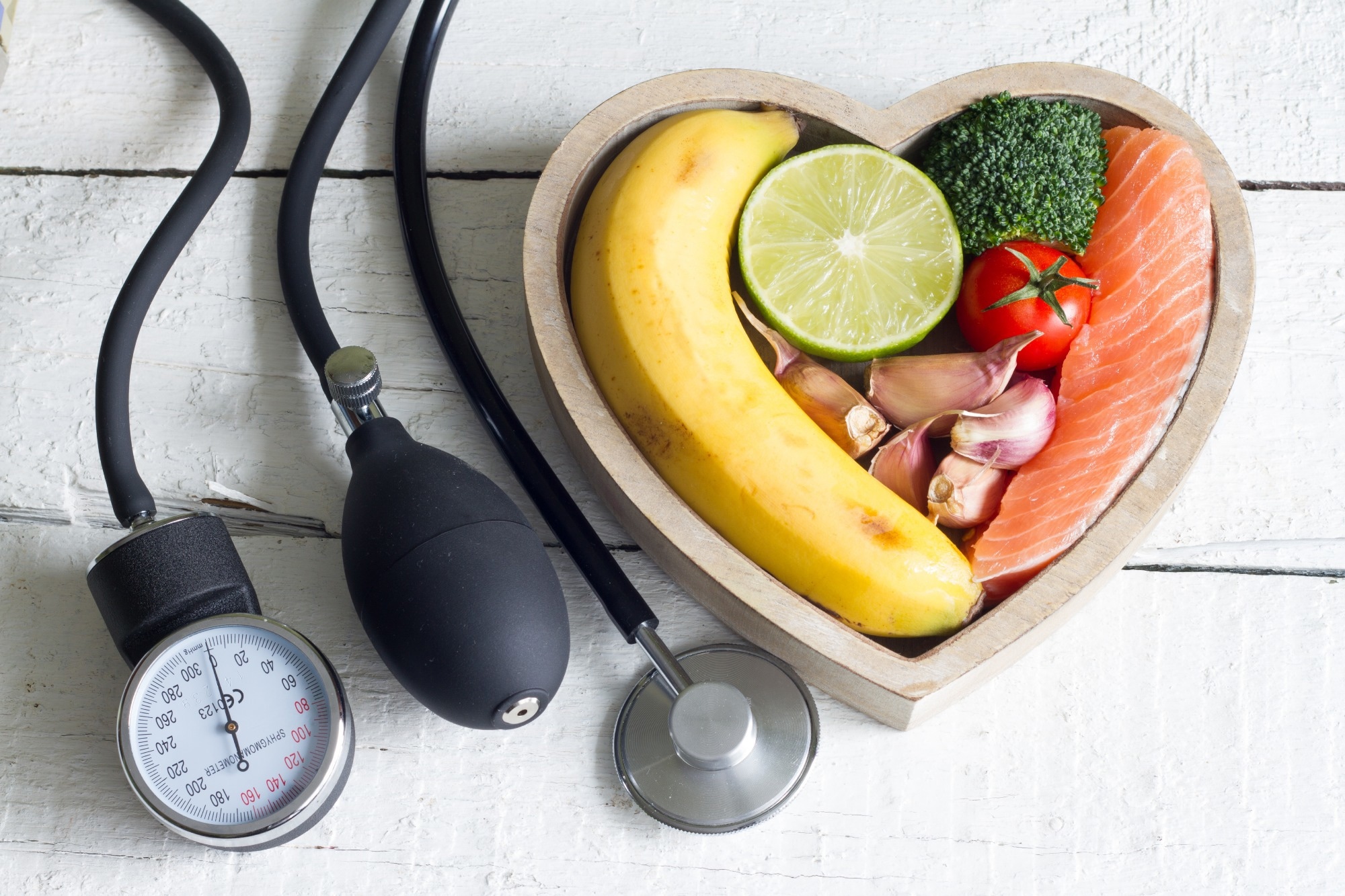Researchers used an umbrella review of meta-analyses from both interventional and observational studies to critically evaluate the effects of different dietary components on blood pressure and hypertension risk in a recent study that was published in the journal Advances in Nutrition.
 Review: The role of diet in the prevention of hypertension and management of blood pressure: An umbrella review of meta-analyses of interventional and observational studies. Image Credit: udra11 / Shutterstock
Review: The role of diet in the prevention of hypertension and management of blood pressure: An umbrella review of meta-analyses of interventional and observational studies. Image Credit: udra11 / Shutterstock
Background
One of the main causes of adult mortality and cardiovascular diseases is high blood pressure (BP). In 2019, there was a 34% global prevalence of hypertension in men and a 32% prevalence in women, but less than half of those receiving treatment had their hypertension under control. Dietary and lifestyle choices, such as consumption of sodium and physical activity, are the primary risk factors. Although the Mediterranean and Dietary Approaches to Stop Hypertension (DASH) diets are highlighted in guidelines from organizations such as the European Society of Cardiology, recent research has focused on the impact of certain food groups and nutrients on blood pressure. To incorporate new dietary knowledge and improve the recommendations currently in place for hypertension, more research is required.
About the study
Based on the Joanna Briggs Institute’s methodology, the current umbrella review was completed and registered on the International Prospective Register of Systematic Reviews (PROSPERO). Up until October 2021, a thorough literature search was conducted across databases including PubMed, Embase, Web of Science, and the Cochrane Central Register of Controlled Trials. Finding meta-analyses of observational and randomized controlled trials (RCTs) on the relationship between diet and blood pressure was the goal. Using particular search terms and concentrating on human studies, two researchers independently worked on this search. Any disagreements over selections were settled by a third researcher.
Meta-analyses were included using a structured method to prevent duplications. The most thorough meta-analysis was chosen in cases where several examined a comparable dietary exposure; this decision was made in light of the quantity of primary studies, overall sample size, and level of detail offered. Author information, publication year, outcome details, study design, exposure, number of participants, result types, heterogeneity analysis, effect estimates, and possible conflicts of interest were among the data that were extracted. Forest plots were used to visually represent effect sizes, and the NutriGrade system was used to further classify dietary effects based on how they affected blood pressure.
Using the Assessment of Multiple Systematic Reviews 2 (AMSTAR 2) tool, the quality of the included publications was evaluated by looking at several important domains related to the systematic review process. Each meta-analysis’s evidence quality was evaluated using the NutriGrade system, which was created to rank the evidence in nutrition research. With two reviewers evaluating the meta-analyses independently and a third settling disagreements, this system assessed the meta-analyses for multiple quality aspects. The quality of the evidence was then assigned a rating, ranging from high to very low, giving rise to a thorough understanding of the body of research on the connection between blood pressure and diet.
Study results
Using the PRISMA flowchart, a thorough review examined 17,099 records and concluded 175 publications. These included a wide range of dietary components, such as beverages, macronutrients, meat, and vegetables. The primary contributors were from North America, Asia, and Europe.
There was variation in the publications’ methodological robustness. 7.5% of RCTs were high-quality studies; the remaining 43.2% were moderate, the remaining 27.4% were low, and the remaining 21.9% were critically low. The observational studies received a low quality rating of 27.6%, a critically low rating of 6.9%, and a moderate quality rating of 65.5%. Numerous substandard studies were criticized for their biases and for ignoring grey literature.
The NutriGrade system found few RCT meta-analyses that were of high quality. 6.5% of RCTs did not report between-study heterogeneity, whereas 35.4% did report significant differences. The low risk of publication bias was present in only 29.6% of RCTs, while the risk profiles of observational studies were varied.
The review investigated food plans and how they affected blood pressure. High-quality RCT data indicated that blood pressure control was positively impacted by diets such as the DASH and ketogenic diets. Conversely, observational studies provided less support for diets like the Mediterranean and vegan. In the meat, egg, and fish category, randomized controlled trials provided a moderate level of evidence regarding fish and egg consumption, while observational studies provided a lower quality of evidence regarding egg and meat intake.
Further investigation revealed the connection between particular foods and blood pressure using the NutriGrade system. Fruits and vegetables received a moderate quality endorsement, indicating that foods like beetroot and blueberries may lower blood pressure. Foods high in starch primarily received poor quality evidence, while legumes showed a mixed picture, with pulses being an exception with their moderate quality evidence. Nuts and seeds—flaxseed in particular—stand out for having excellent evidence supporting their ability to lower blood pressure. There was some evidence to support cocoa as well.Within the herb domain, licorice increased diastolic blood pressure and cinnamon decreased it. The effects of teas on blood pressure were found to be somewhat credible, while coffee’s effects were less clear. In discussions about macronutrients, proteins with good evidence were highlighted, such as soy protein and L-carnitine. By contrast, most fats and oils showed inconsistent results, with the exception of a few like EPA (eicosapentaenoic acid). Minerals showed variation as well; potassium was strongly recommended for lowering blood pressure, while calcium and zinc were not.
